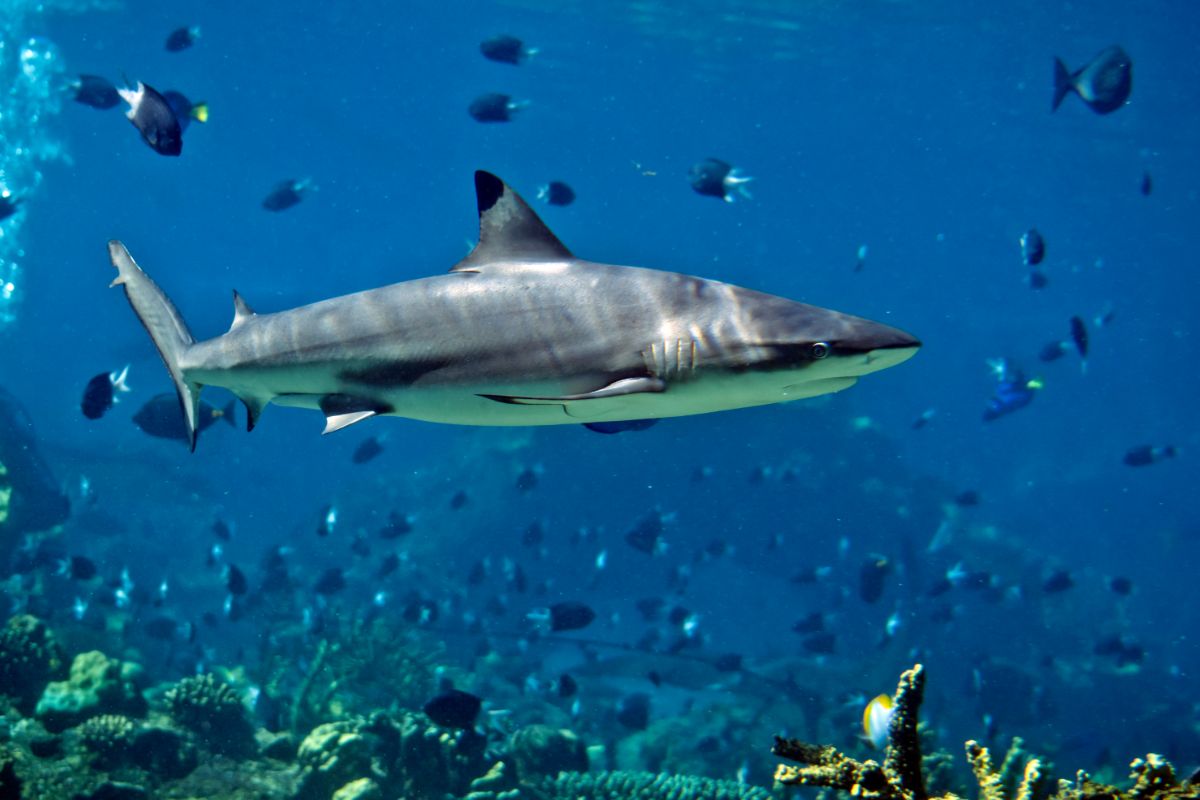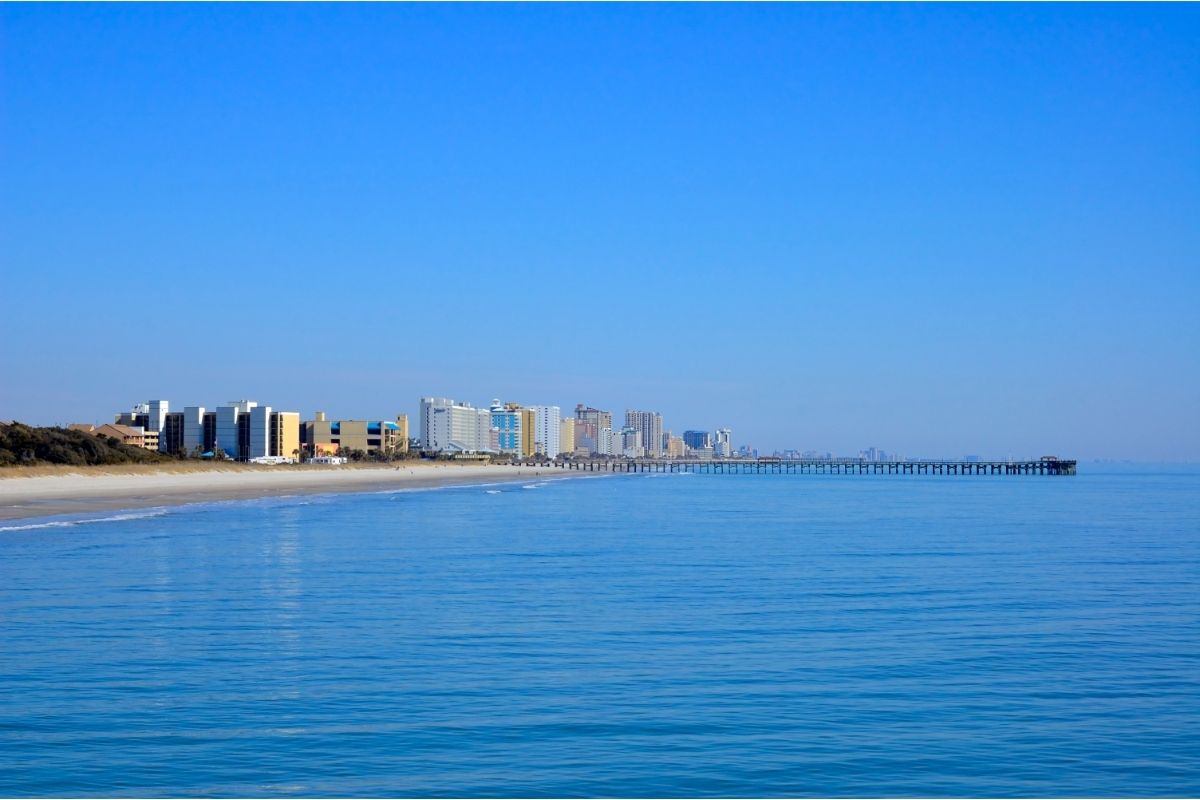Let’s face it, sharks are some of the coolest creatures on the planet.
They’re some of the fiercest predators in the ocean, and have developed quite the reputation in popular culture.

You’ve probably heard a bunch of cool facts about sharks, too. But have you ever heard that sharks have no bones?
To the surprise of some, this fact is true. You might wonder, then, how a shark could possibly be a vertebrate if it has no bones.
Bones are one of the defining characteristics of a vertebrate, aren’t they? Well, no. Sharks are vertebrates, despite the fact that they have no bones.
To find out how this could be possible, we’ll first have to ask ourselves what makes a vertebrate a vertebrate.
What Is A Vertebrate, And What Makes A Shark One?
In terms of scientific classification, sharks belong to the Elasmobranch subclass of Chondrichthyes.
Further up the classification system, sharks also belong to the Vertebrata subphylum.
That all sounds like a lot of scientific jargon, which it is, but it’s pretty simple to break down.
Sharks are a type of fish of the class Chondrichthyes, which means ‘cartilaginous fish’, and more broadly they belong to the Vertebrata, which means, you guessed it, vertebrates.
Along with other sawfish, rays, and skates, sharks make up the Elasmobranchii subclass.
That’s all well and good, but we still haven’t answered exactly what makes a shark a vertebrate. So, what is the definition of a vertebrate?
A quick look at most dictionaries will bring up a definition of vertebrate that reads something like “having a spinal column”.
Many of the definitions, however, include the word ‘backbone’ in their definition too, either in addition to, or as a substitute for, the term ‘spinal column’.
That’s where some people might get thrown off.
To put it simply, the defining feature of a vertebrate is its spinal column, otherwise known as its vertebral column.
Despite these two words being interchangeable with the term ‘backbone’ in popular usage, the vertebral column does not necessarily need to be made of bone.
Indeed, vertebrates don’t need a single bone in their body to meet this specification. A shark’s vertebral column is made out of cartilage.
To be precise, it is made out of calcified cartilage, which resembles bone, but in reality is just cartilage hardened by calcium deposits.
In fact, all mammals, fish, birds, reptiles, and amphibians are vertebrates.
That’s you and me, as well as our friends the sharks, even if they don’t have bones like we do.
Are All Sharks, Including Hammerhead Sharks, Great White Sharks, And Whale Sharks, Vertebrates?
Yes! As we just covered, all fish are vertebrates. Since sharks are fish, they must, by definition, all be vertebrates.
That includes all your favorite shark species, from the majestic whale shark, to the fearsome great white.
As with all sharks, these species are cartilaginous fish and have a spinal column made out of cartilage. In fact, their entire skeletons are made of cartilage.
Cartilaginous Fish?
There are nine different classes of vertebrate. Five of these classes are fish: Hagfish, Lampreys, Ray-Finned Fish, Lobe-Finned Fish, and Cartilaginous Fish.
It is to this latter class that all shark species belong to.
As the name suggests, cartilaginous fish are best characterized by having skeletons mainly made of cartilage, although they do share some other characteristics, too.
The other four classes of vertebrate are, of course, amphibians, birds, fish, and mammals.
How Do A Shark’s Vertebrae Function?

As in other vertebrates, the primary function of the vertebrae in a shark is to protect the spinal cord.
Every shark, indeed every cartilaginous fish, has two cartilaginous ‘tubes’ in its vertebrae. Forming the upper cartilaginous tube are neural arches.
Between each vertebra, there is further connective cartilaginous tissue. Together, the vertebrae and the tissue form one long continuous spinal cord.
The second, lower cartilaginous tube houses the notochord, a flexible rod made out of material similar to cartilage.
The lower cartilaginous tube is an intricate structure and consists of several layers of calcified cartilage, as discussed earlier.
What Is A Shark’s Skeleton Made Of?
We’ve touched upon it a little so far, but yes, it’s true. Sharks, unlike the vast majority of vertebrates, have no bones at all.
And yet, sharks have a skeleton, just like us. So what is a shark’s skeleton made of? Yes, you’ve guessed it!
The entirety of a shark’s skeleton is made out of cartilage and associated connective tissues.
There’s a reason for this, which we’ll get to shortly, but suffice to say that this adaptation makes sharks both lightweight and flexible.
The smart ones amongst you have probably already worked it out! Before we get to that, though, let’s do a little more on shark skeletons.
The cells that make up healthy cartilage, and by extension the cartilage in a shark’s cells, are called chondrocytes (you can see where the name comes from).
These are specialized cells that produce and maintain the cartilaginous matrix, which is made primarily of collagen and proteoglycan, though elastin fibers are also present.
Although it is true that all of a shark’s skeleton is made of cartilage, not all cartilage was made equal.
Indeed, different parts of the shark are made of different types of cartilage.
It’s a good job, too, because if all of a shark’s skeleton was made up of cartilage as we typically think of it, they wouldn’t be the feared predators they are today.
Vital parts of a shark’s skeleton, including the spine (as we’ve discussed) and the jaws, are made out of calcified cartilage.
These areas need extra support, to be able to withstand rigorous wear and tear. Think about a shark’s jaws, for example.
When a shark catches its prey, it needs to be able to bite and hold with a lot of force.
Having calcified cartilage in the jaw helps the shark to withstand these forces.
Likewise, the spinal column needs to be made of calcified cartilage because it is the shark’s integral piece, holding the entire structure together.
It is also put under a lot of strain when a shark swims quickly and powerfully.
As we discussed earlier, calcified cartilage is made stronger by a coating of calcium salts, which leads it to resemble bone.
In many ways, calcified cartilage is somewhere between cartilage and bone. It’s not as strong as bone, but not as flexible as cartilage.
It’s a good trade off for the shark, as it gets a little extra solidity whilst still remaining lightweight.
Another couple of parts of a shark’s anatomy that are constructed from specialized cartilage are the snout and the skull.
Understandably, the cartilage forming the skull is thicker than in other parts of the shark, as its purpose is to protect the shark’s brain.
The cartilage around the shark’s snout, on the other hand, is relatively soft, even spongy. Its purpose is to absorb impacts, sort of like the airbag in your car.
How Do Sharks Benefit From Having No Bones?
Because a shark’s skeleton is made out of lightweight cartilage, it is much lighter than that of other creatures.
In fact, the weight of a shark’s skeleton makes up just 8% of a shark’s overall bodyweight.
The result is that sharks have to expend much less energy swimming than heavier species of fish.
Of course, sharks also need their skeletons to be light to keep them buoyant, as unlike bony fish they have no swim bladder to act as a buoyancy aid.
Of course, needing to expend less energy and being able to swim more quickly because of a lightweight skeleton is a great survival adaptation.
However, it’s not the only benefit of a shark’s cartilaginous skeleton. It also makes sharks highly flexible, which is great for hunting.
Some species of shark can even turn round and defend themselves from something attacking their tail.
Having a cartilaginous skeleton also reduces general wear and tear, especially around the joints.
The friction of bones rubbing together causes wear, but this is much less of a problem for cartilage.
In addition, sharks have another special adaptation known as synovial capsules.
These synovial fluid filled bags sit between a shark’s joints and act as shock absorbers, further helping to reduce general wear.
Adding to a shark’s overall flexibility are the elastic tissues that hold the joints in place. These allow the shark to really stretch its joints without damaging them.
A great example of this functionality is a shark’s jaw, which can open super wide to catch prey.
Do Sharks Have Similarities With Mammals?
Although sharks and mammals are both vertebrate animals, they are still very different.
The obvious differences include breathing through gills rather than lungs, a lack of body hair, and an absence of mammary glands to feed their young.
One similarity between some species of shark and most mammal species is the act of giving birth to live young.
However, since there are a few species of egg-laying mammals, this cannot be considered a strictly mammalian characteristic.
To be clear, although sharks and mammals are both vertebrates, it does not mean that sharks are mammals or even closely related to them.
Final Thoughts
Hopefully, having read this article you now know that despite having no bones, sharks are vertebrates!
They are cartilaginous fish, with skeletons made up of specialized cartilage rather than bone.
- Is It Possible For A Shark To Swim Backwards? - August 2, 2024
- Are Leopard Sharks Dangerous? - August 2, 2024
- What Are The Differences Between Shark And Dolphin Fins? - August 1, 2024








